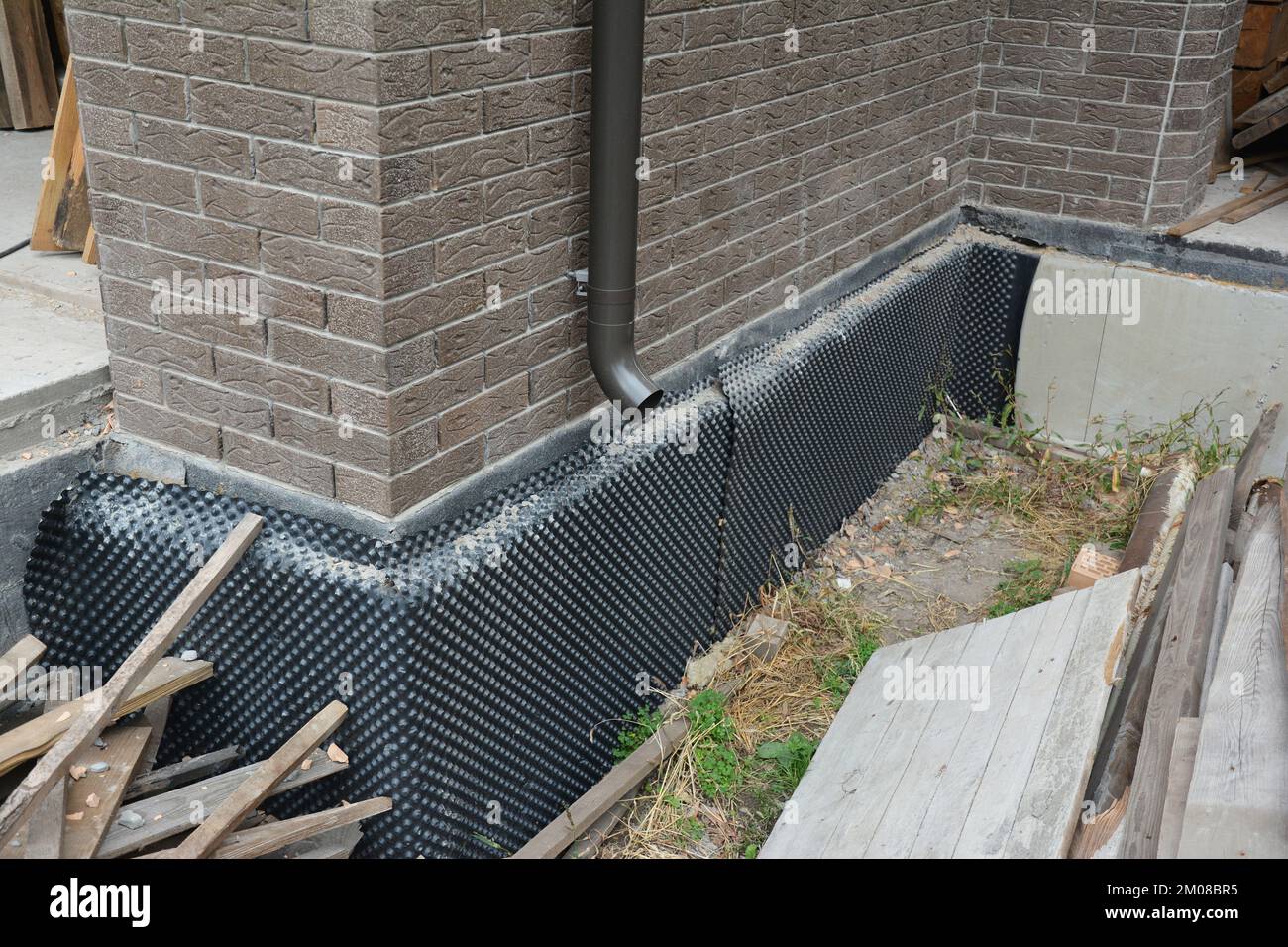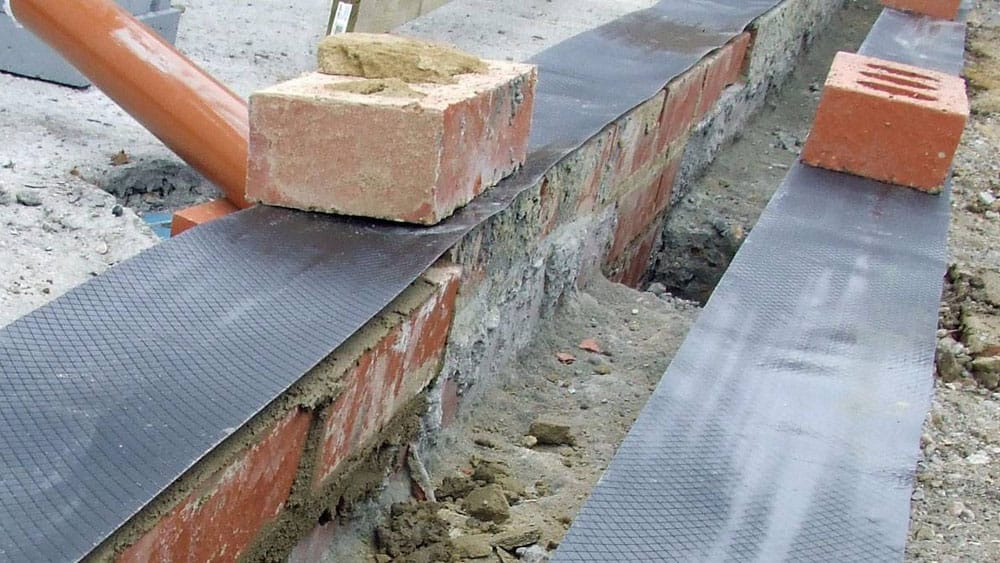Checking Out the Numerous Techniques and Solutions for Effective Damp Proofing
Moisture in structures positions substantial difficulties to both structural stability and indoor air quality. Numerous techniques and services have actually arised to fight this pervasive issue. From traditional damp-proof membrane layers to ingenious chemical therapies, each technique provides unique advantages. Recognizing these options is essential for efficient wetness control. Selecting the best option depends on details building conditions and needs, prompting further exploration right into the most efficient moist proofing techniques offered.
Recognizing the Root Causes Of Wetness
Although dampness can emerge from numerous resources, comprehending these causes is vital for reliable removal. Commonly, dampness stems from 3 primary resources: increasing wet, permeating damp, and condensation. Climbing moist takes place when groundwater takes a trip upwards with permeable materials, such as block or stone, commonly because of a lack of a reliable obstacle (mould treatment newcastle). Permeating wet is typically brought on by outside aspects, including roofing leakages, faulty gutters, or harmed wall surfaces, allowing water to penetrate a building. Condensation, on the other hand, results from excess wetness in the air, commonly aggravated by bad air flow and temperature differences, causing water droplets creating on surfaces. Determining these underlying issues is essential, as each type of wetness needs a customized approach for removal. Correct analysis assists in identifying one of the most effective remedies, eventually securing the structural stability of a building and boosting indoor air top quality
Standard Damp-Proof Membranes

Chemical Damp-Proofing Solutions
Chemical damp-proofing remedies offer an innovative technique to preventing moisture intrusion in buildings. These techniques typically involve the application of liquid chemicals that penetrate masonry and develop a barrier against climbing wet. Typically used chemicals include silanes, siloxanes, and various other water-repellent representatives that respond with surface area materials to produce a hydrophobic layer.The application process typically requires drilling openings right into the wall surfaces, injecting the chemical service, and permitting it to heal. This approach is specifically advantageous for older structures where typical damp-proof membrane layers might be unwise. Chemical damp-proofing can be much less disruptive and more cost-effective than comprehensive remodelling projects.While effective, these remedies depend on proper application and environmental problems for peak performance. damp specialist newcastle. Routine maintenance and monitoring are vital to guarantee the longevity of the damp-proofing treatment. On the whole, chemical damp-proofing represents a flexible option for guarding structures versus moisture-related damages
Cavity Wall Surface Construction Methods
Cavity wall construction strategies supply many benefits, specifically in dampness control and energy performance. By integrating an air void between 2 layers of masonry, these walls successfully minimize water access while enhancing insulation. This combination not only protects frameworks from wetness however also contributes to decreased power usage.
Advantages of Tooth Cavity Walls
When thinking about effective moist proofing techniques, the benefits of cavity wall surfaces stand apart prominently. Tooth cavity walls include two separate layers, producing an air space that effectively decreases wetness infiltration. This layout decreases the danger of wetness, as the outer wall surface acts as a barrier against rain and water ingress. In addition, tooth cavity wall surfaces boost thermal insulation, which adds to power effectiveness by decreasing warm loss. They additionally give audio insulation, helping to develop a quieter interior atmosphere. In addition, the air gap enables for air flow, which helps in dampness control and lowers the chance of mold growth. These benefits not only boost the general comfort of a structure yet likewise add to its durability and architectural integrity.
Wetness Control Approaches
Reliable moisture control approaches are crucial in dental caries wall surface construction to guarantee long-term protection versus dampness. One primary technique includes the incorporation of weep openings, which facilitate water drain from the dental caries, protecting against buildup. In addition, the usage of breathable membrane layers can aid handle moisture levels while enabling caught vapor to leave. Proper positioning of insulation is likewise crucial, as it needs to not block drainage courses. Furthermore, making certain that the external fallen leaves of the cavity wall surface are created with water-resistant materials boosts overall toughness. Normal upkeep checks are important to determine any kind of clogs or damages early, securing the structure's integrity. Ultimately, a mix of these techniques develops a durable protection versus dampness breach in cavity walls.
Insulation and Energy Efficiency
Insulation plays a vital role in enhancing energy efficiency within cavity wall surface construction. By integrating insulating products, these walls develop a thermal obstacle that reduces warmth loss and lowers power consumption. Effective insulation not just assists preserve a stable indoor temperature level yet likewise alleviates the threat of dampness, as it avoids condensation within the wall surface tooth cavity. Numerous techniques, such as using stiff foam boards or mineral woollen, can be utilized to attain ideal insulation efficiency. In addition, appropriate installation is necessary to guarantee that spaces and voids are minimized, which can or else jeopardize power effectiveness. Eventually, a well-insulated cavity wall surface contributes significantly to overall sustainability and lowers heating and cooling costs for house owners.
External Damp Proofing Approaches
Outside wet proofing techniques are necessary for securing frameworks from dampness seepage. 2 effective techniques consist of the application of water resistant membrane layers and the installment of French drains. These remedies assist minimize water build-up and preserve the integrity of buildings.
Waterproof Membrane Layer Application
While various methods exist for avoiding dampness ingress, the application of water resistant membranes stays an extremely effective exterior damp proofing method. These membranes are commonly made from products such as polyethylene, rubber, or modified bitumen, giving a robust barrier against water infiltration. The installment process includes using the membrane layer to the external surfaces of foundations or walls, making certain complete insurance coverage to stop leakages. Proper attachment and securing at joints are critical to making the most of efficiency. Water-proof membranes can be applied in different kinds, including fluid coatings and sheet membranes, permitting adaptability based on the specific demands of the framework. This approach not only shields structures from wetness but also improves their long life and architectural integrity.
French Drain Installation
One efficient approach for managing groundwater and stopping dampness buildup around a structure's structure is the installment of a French drainpipe. This drain system is composed of a trench loaded read more with crushed rock and a perforated pipe that redirects surface area water far from the structure. Appropriate setup requires careful planning, guaranteeing that the drain slopes away from the framework to facilitate perfect water circulation. In addition, the place of the drainpipe is vital; it needs to be placed in areas prone to merging or excess wetness. Routine maintenance, including clearing up debris from the gravel and making certain the pipe stays unobstructed, is important for lasting efficiency. Ultimately, a well-installed French drainpipe can substantially lower the danger of water-related issues in foundations and cellars.
Interior Waterproofing Strategies
Inside waterproofing methods are important for protecting a building's inside from dampness infiltration and possible water damage. These strategies typically entail the application of specific products and methods developed to create a moisture obstacle within the structure. One usual strategy is the usage of waterproof coatings or sealers on walls and floors, which avoid moisture from penetrating surfaces.Additionally, mounting indoor drain systems, such as sump pumps, can properly manage water buildup in basements and crawl areas. Another method includes making use of vapor barriers, which are installed to inhibit moisture motion from the ground into living spaces.Moreover, dealing with any kind of splits or gaps in wall surfaces or foundations with ideal sealers guarantees a detailed protection against water invasion. By carrying out these indoor waterproofing strategies, residential or commercial property owners can considerably decrease the threat of mold growth, architectural damages, and various other moisture-related concerns. Correct implementation of these strategies is essential for long-lasting security and building stability.
Normal Maintenance and Evaluation Practices
Normal maintenance and examination practices are vital for assuring the lasting effectiveness of damp proofing services in any type of building. Routine checks allow homeowner to determine very early indications of wetness intrusion, such as peeling paint, mold and mildew development, and stuffy smells. These signs can signify underlying issues that require prompt attention.Inspections need to be performed a minimum of yearly, concentrating on at risk locations like basements, crawl areas, and outside walls. During these assessments, residential property proprietors ought to analyze sealers, drain systems, and ventilation to validate they operate correctly.Additionally, keeping downspouts and rain gutters is important, as clogged up systems can cause water accumulation near the structure. Carrying out a regular upkeep routine, along with timely fixings, can considerably extend the life expectancy of moist proofing steps and protect the architectural integrity of the building. Aggressive steps inevitably contribute to the general health and wellness of the living atmosphere.
Frequently Asked Concerns
The Length Of Time Does Damp Proofing Commonly Last?
The period of damp proofing performance varies, typically lasting between 20 to half a century. Variables such as application high quality, ecological problems, and maintenance practices greatly influence the long life of the damp proofing treatment.

Can I Damp Evidence My Home Myself?
The private considered the usefulness of do it yourself damp proofing. With correct research study and the appropriate materials, it is feasible. They also acknowledged the value of professional guidance to guarantee resilient efficiency and avoid future concerns.
What Are the Signs of Inadequate Damp Proofing?
Indications of ineffective moist proofing include relentless stuffy smells, noticeable mold growth, peeling paint, moist spots on walls, and timber decay - damp specialist newcastle. Home owners should address these concerns quickly to stop additional damage and wellness concerns
Does Damp Proofing Affect Indoor Air High Quality?

Just How Much Does Expert Damp Proofing Expense?
Professional damp proofing expenses vary significantly, commonly ranging from $1,000 to $5,000 relying on the residential property's size, the level of the wet problem, and selected approaches. Each circumstance calls for a tailored evaluation for accurate prices. Generally, moisture stems from three main sources: climbing wet, permeating wet, and condensation. When considering effective moist proofing techniques, the benefits of dental caries walls stand out prominently. External moist proofing approaches are important for shielding structures from dampness seepage. While different techniques exist for protecting against moisture ingress, the application of water-proof membrane layers continues to be a highly efficient outside moist proofing strategy. Signs of ineffective damp proofing include persistent musty smells, visible mold growth, peeling paint, damp patches on walls, and wood decay.